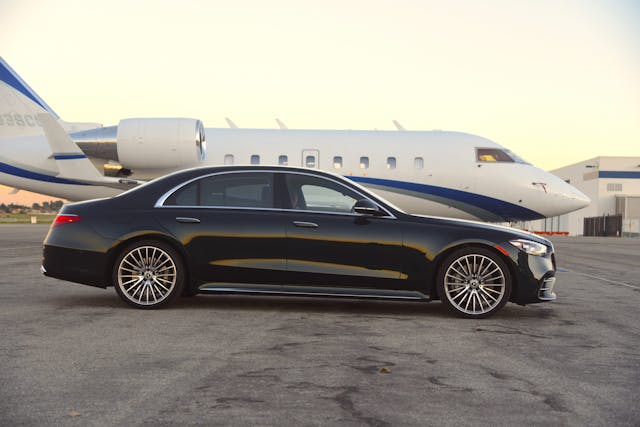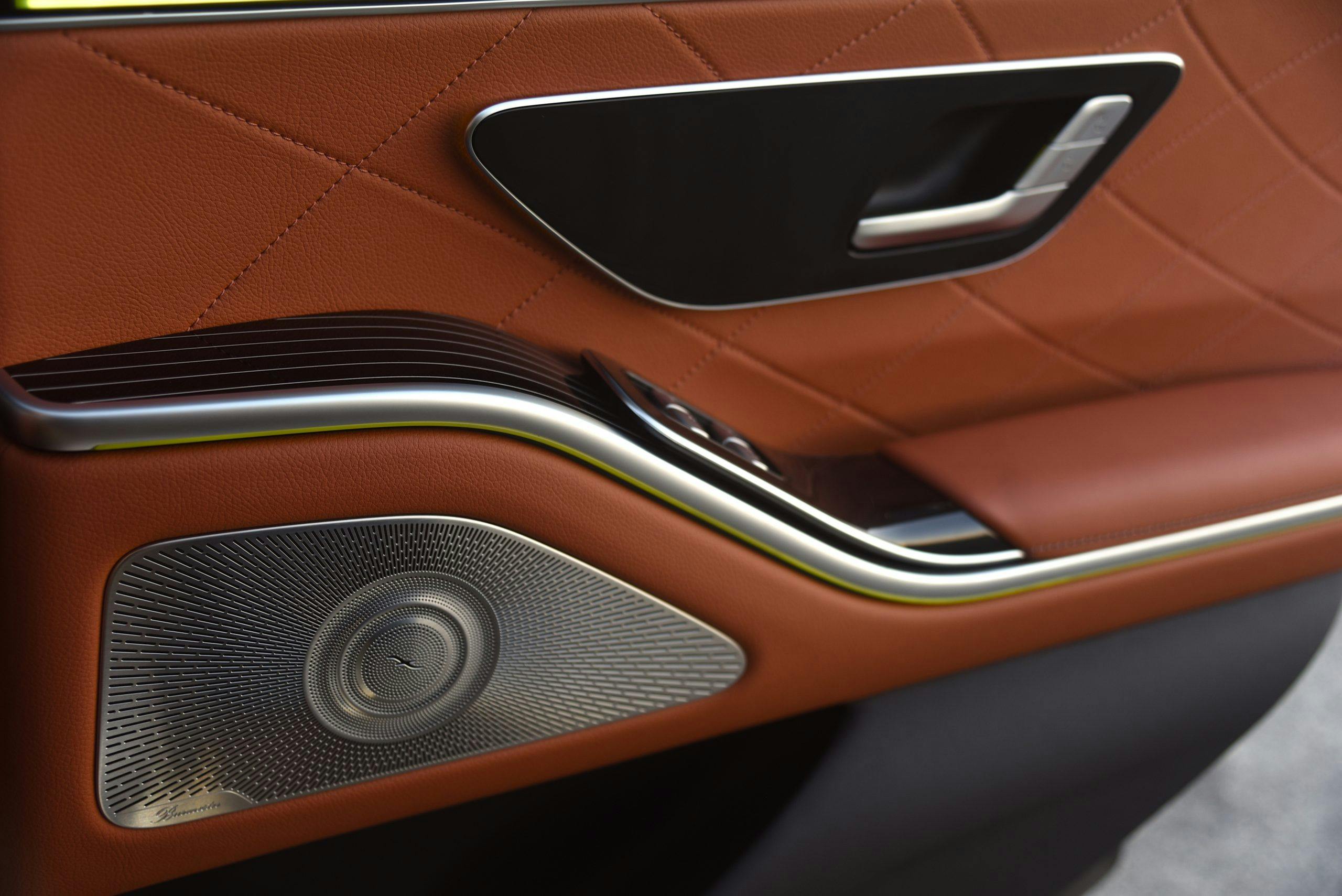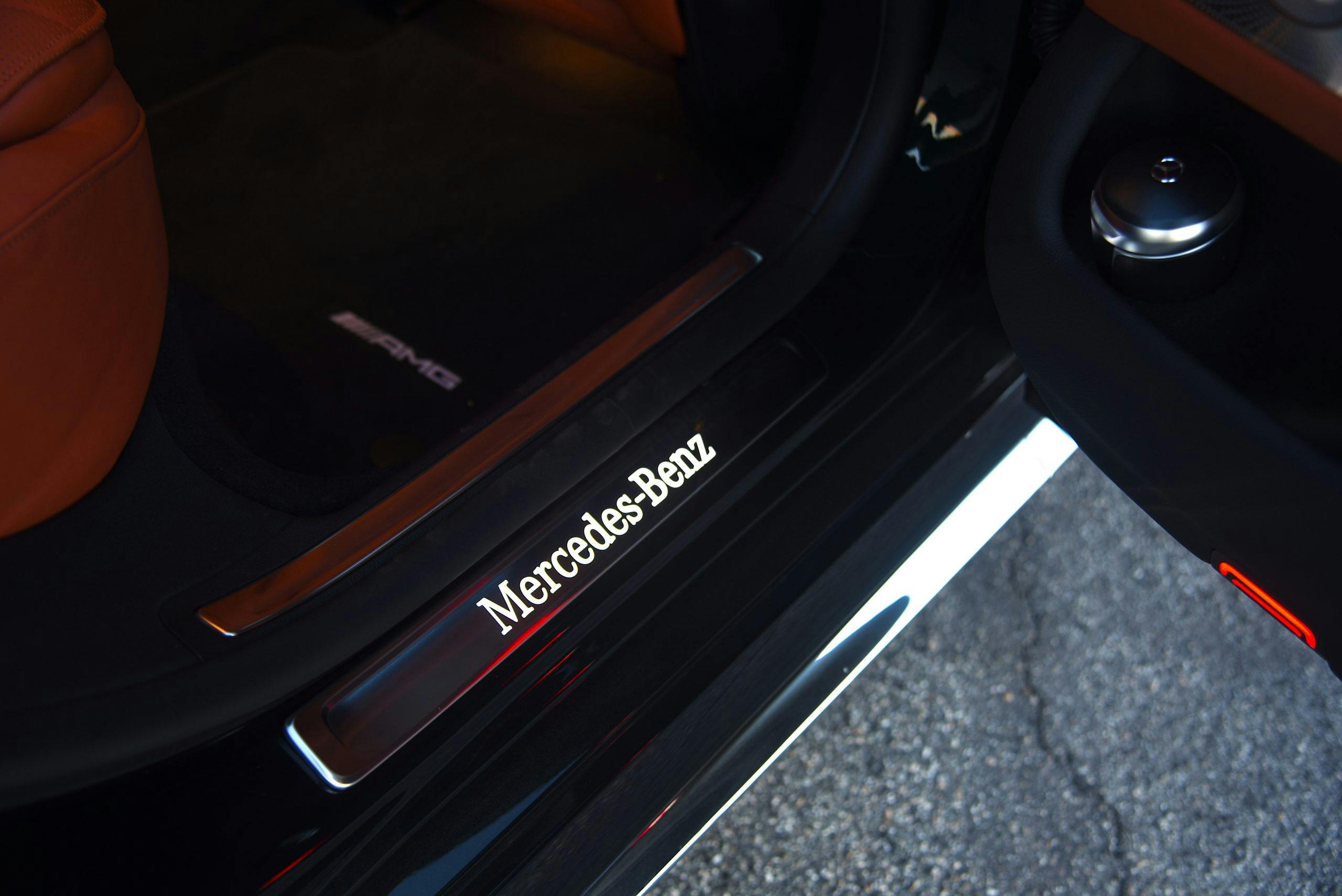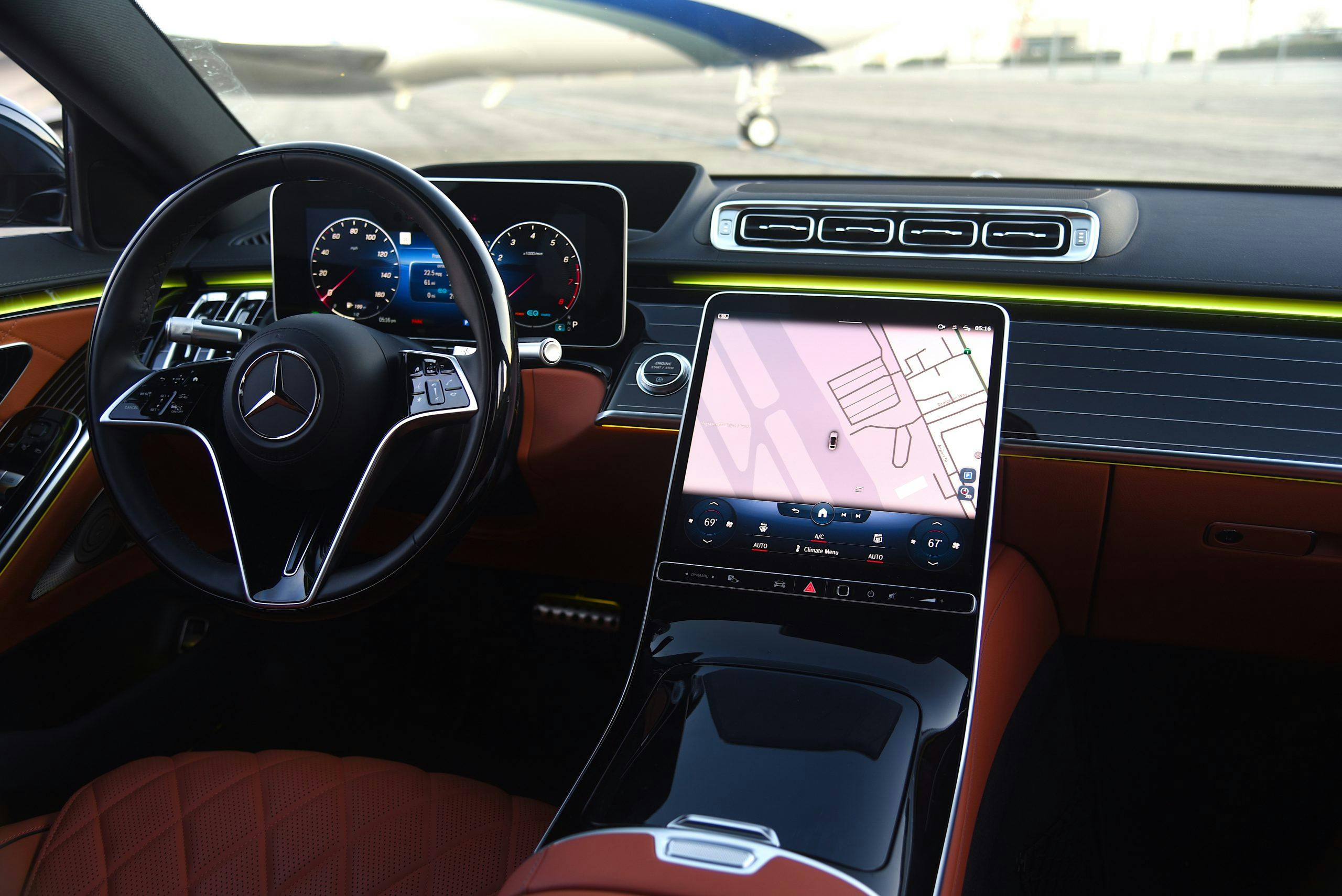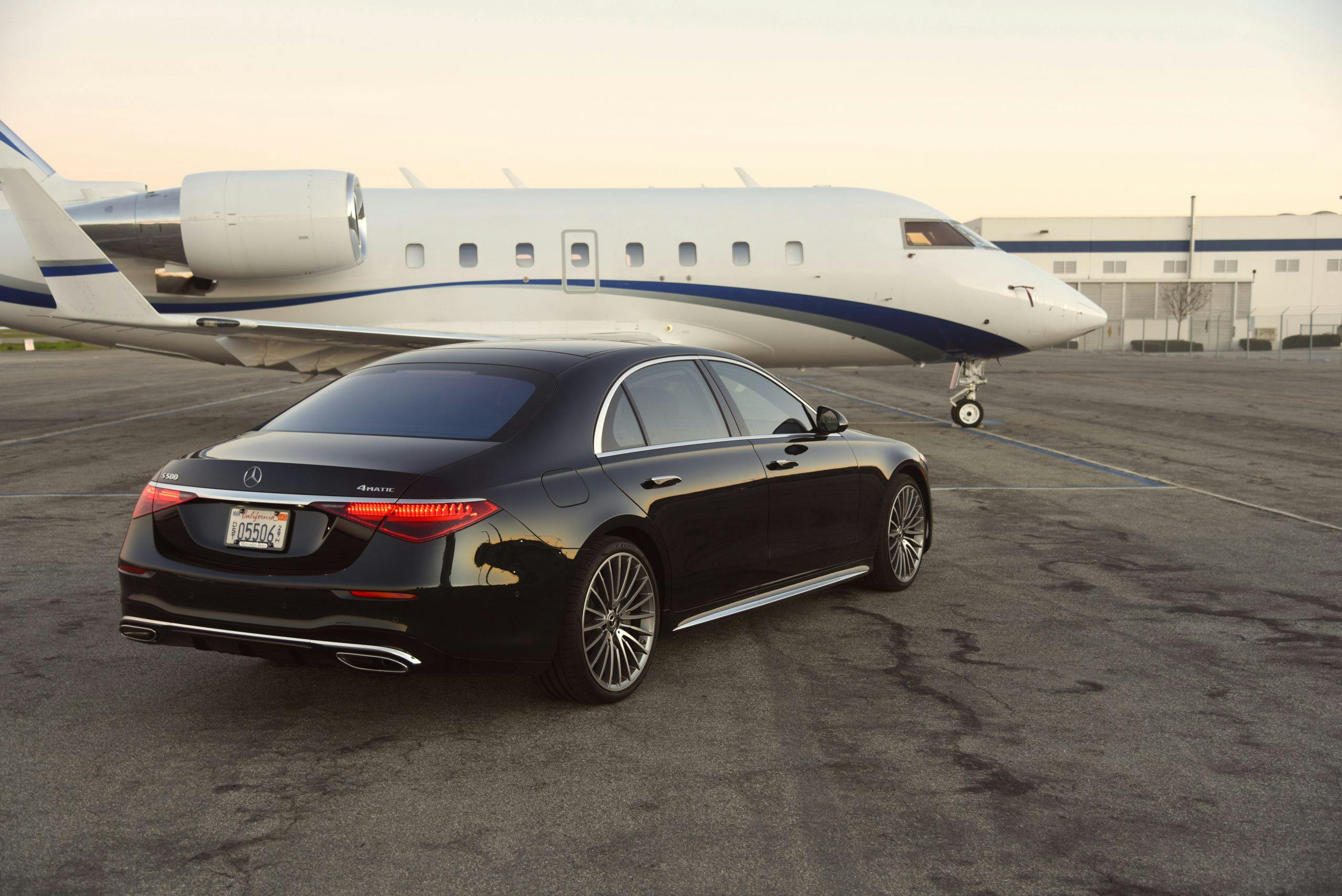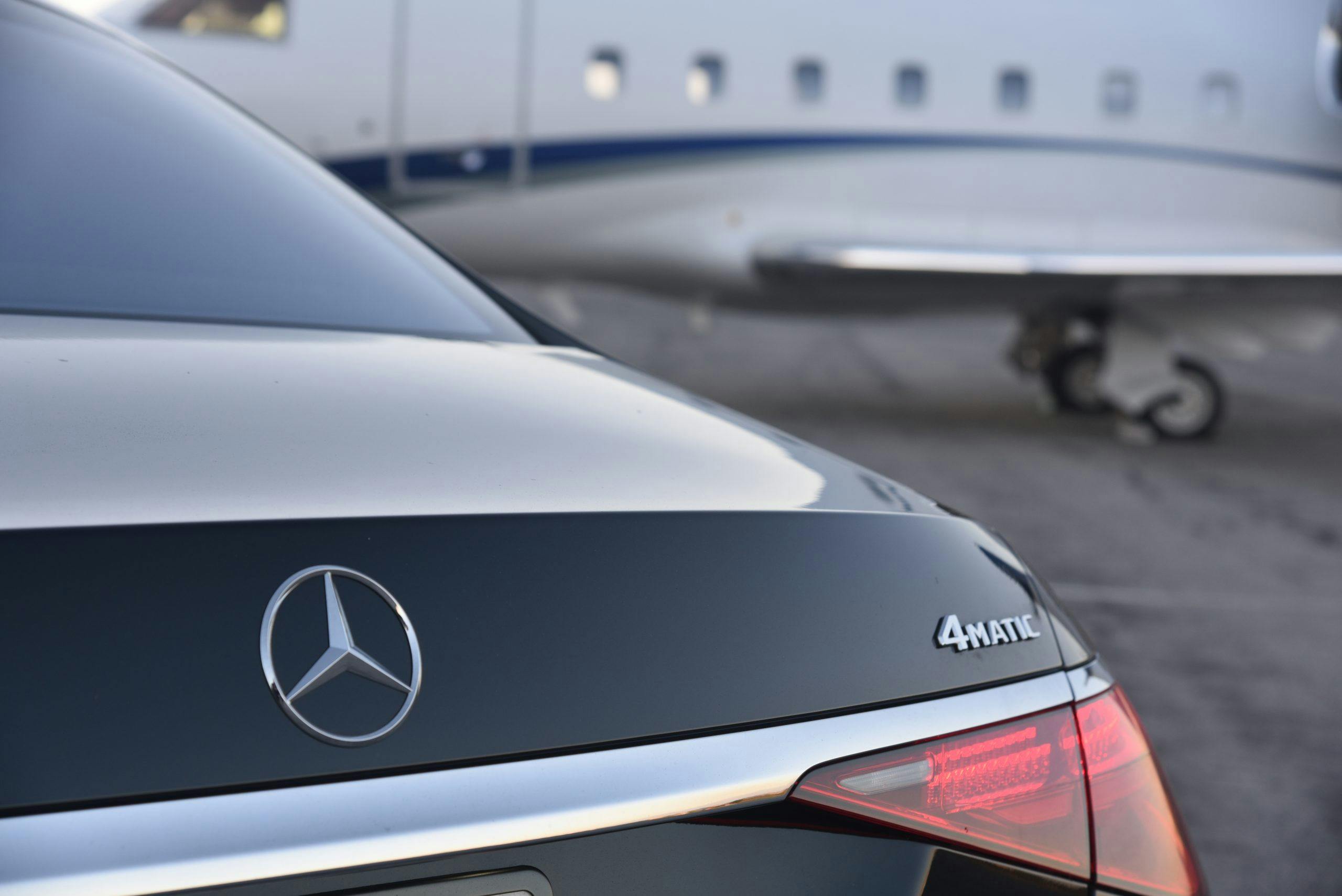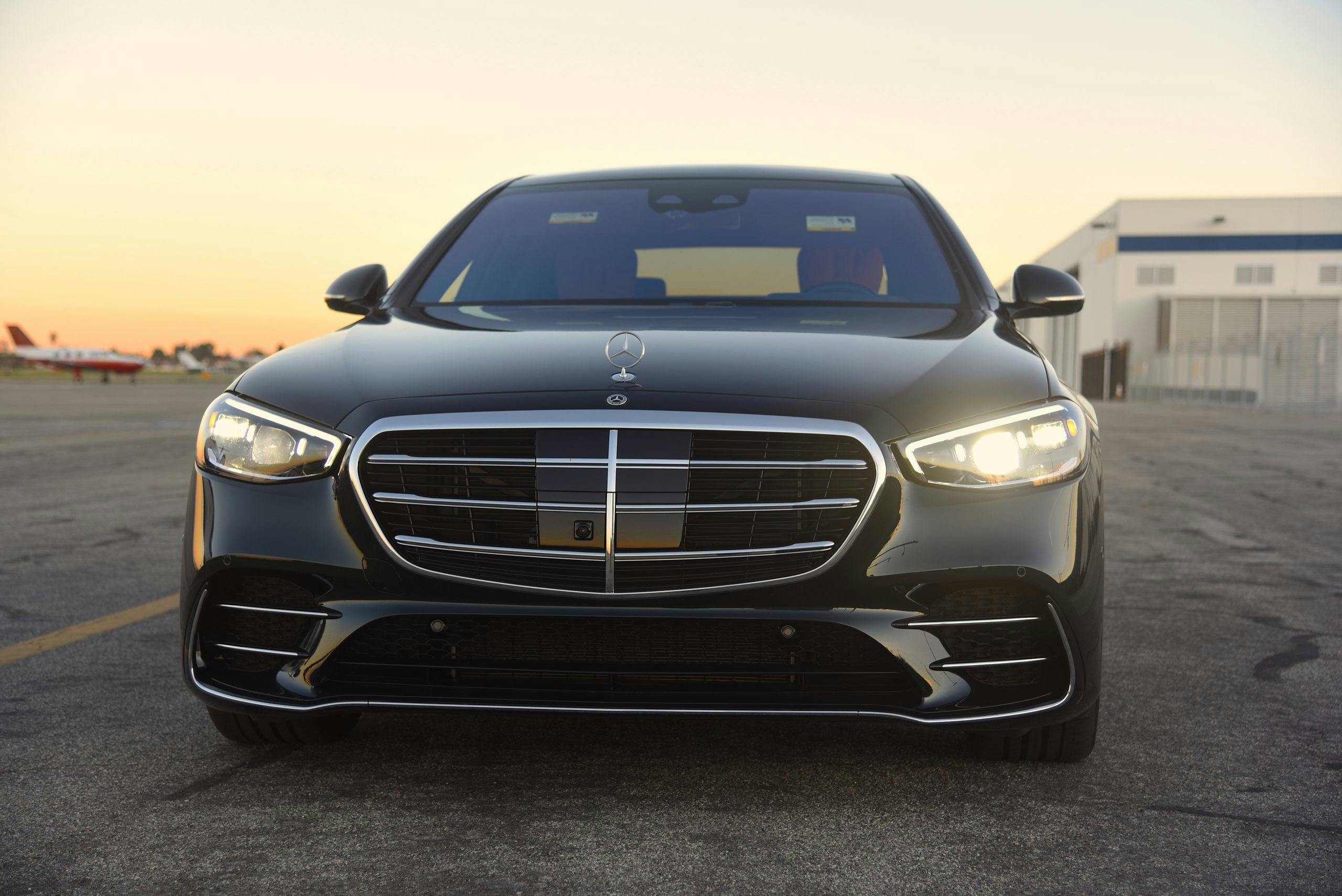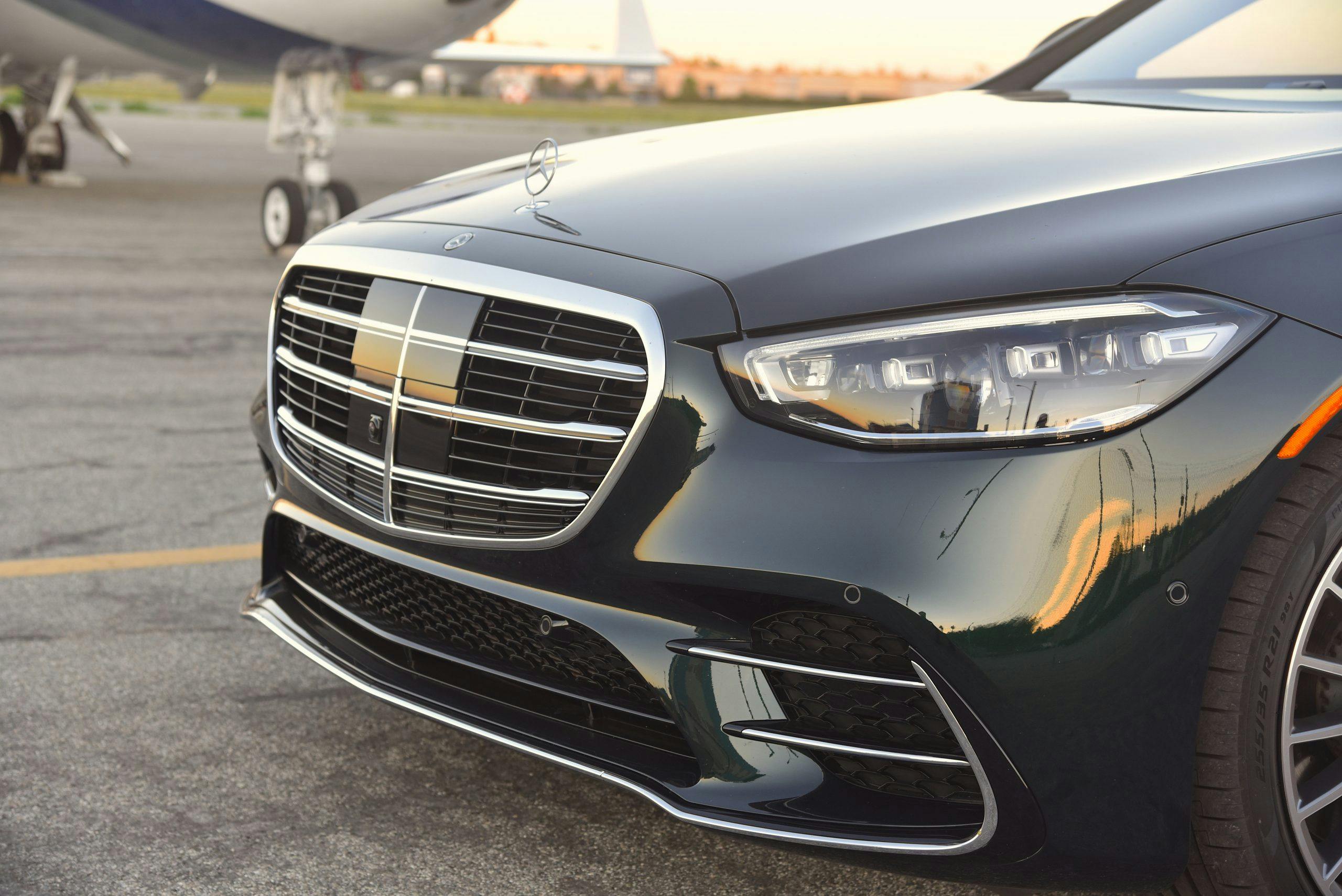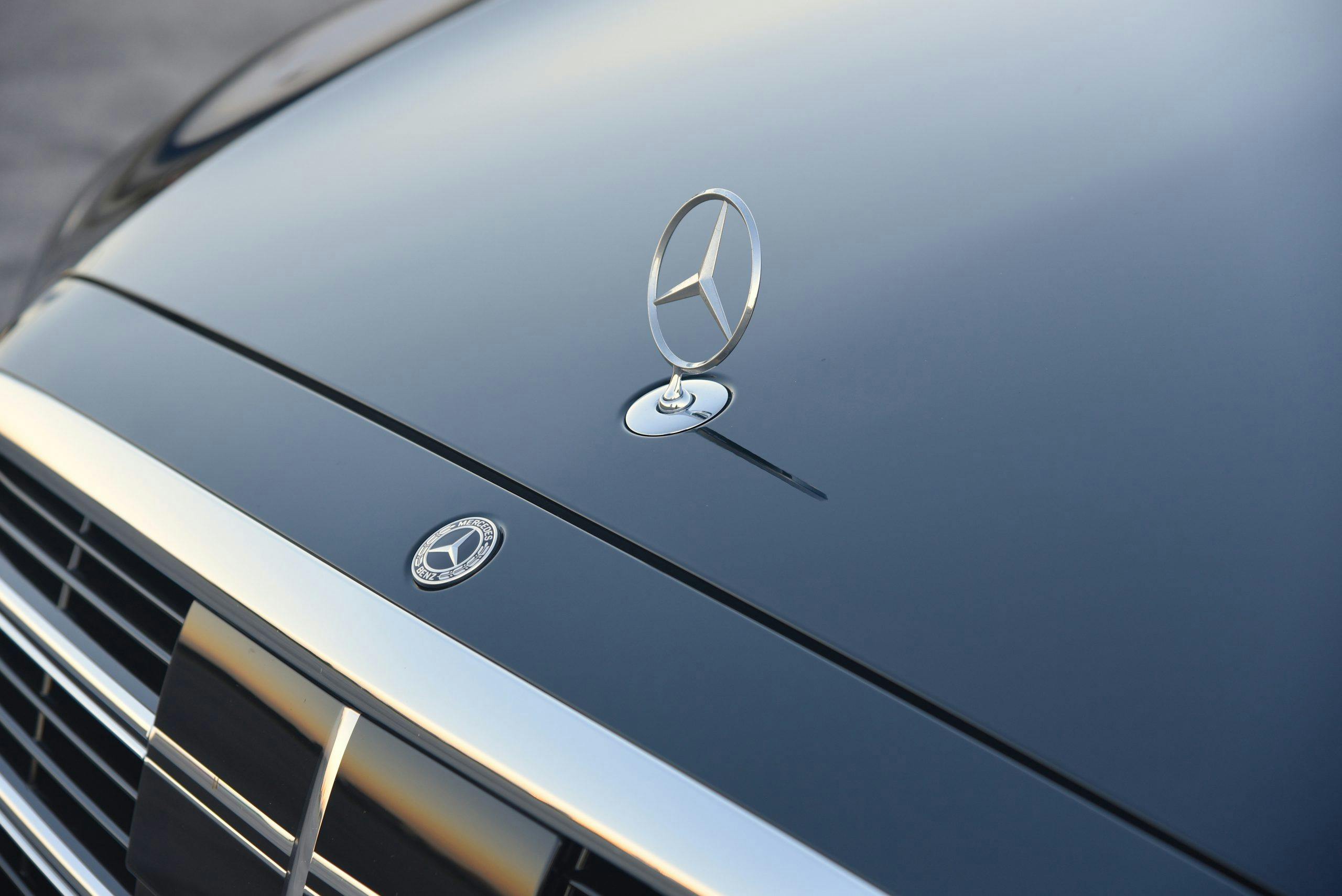Media | Articles
Review: 2022 Mercedes-Benz S500 4Matic
While driving the 2022 Mercedes-Benz S500 4Matic, I glided—it glides everywhere—up to a four-way stop in Los Angeles about the same time as the driver of a two-tone, late-model Rolls-Royce Ghost. He looked at me. I looked at him. He went. I followed. A thought occurred to me: Yes, I know his car is more expensive, by roughly a hundred grand. He knows his car is more expensive, even if he doesn’t know the Benz’s $127,330 price exactly. I know his car does pretty much the same thing as the Benz, and I wondered who was entitled to feel superior: The Rolls owner, who clearly enjoys exclusivity and prestige, or the Benz driver who enjoys pretty much everything else the Rolls has to offer but for a lot less money? Is having anything more luxurious than an S-Class anything more than pure vanity?
Putting aside the question of who out-snobbed whom at that intersection (there’s a Maybach S-Class for those compelled to pay more for a Mercedes), the 2022 Mercedes-Benz S-Class remains as the model ever was since its formal launch in 1972: an opulent shipping container for the elite who wish to express wealth and taste but with more sotto voce then those rolling in a Rolls or Bentley. And let’s face it, Mercedes isn’t the same company it was in 1972. It now sells many flavors of highly affordable vehicles, the cheapest A220 sedan starting around $34,000. Some people just don’t want to buy their six-digit luxury cars from a dealership that also offers lease doorbusters, and we get it.
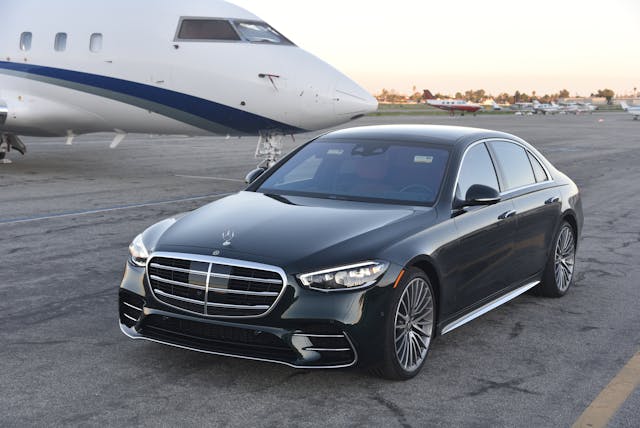
That makes this former apex sedan now something of a middle-market car, with much newer comers from Lexus and Genesis nipping at its heels. When an S-Class meets a Genesis G90 at a four-way stop, a reverse dance of the snobberies happens, as the G90 base price is roughly $35 grand less than an S-Class’s (the ratio is likely even more skewed in South Korea where imported cars are taxed to the hilt). Yet despite the heel-nipping, the S-Class endures with dignity, the company dominating its little niche with just over 14,000 sales last year, almost twice rival BMW’s sales of its 7 Series and blowing the G90 into the weeds. Lexus, with just under 4000 sales of the LS, is barely on the map. Rolls and Bentley sales are in the hundreds.
We’ll avoid the subject of boat-anchor depreciation, a weakness that affects all in this segment, and celebrate the S-Class as the reigning queen of the limos. The 2020 redesign kept the flowing roofline but shrank the previous car’s oblong tree-leaf taillights to simpler horizontal bars. It cleaned up the side graphics, shrank the headlights, and, in sportier models, pastes on the now portfolio-wide flaring-mouth lower grille. More significantly, the interior ditches any design nods to heritage, as in the old car, and yields fully to the march of the iPads. A 12.8-inch OLED touchscreen dominates the center console, powered by the company’s latest MBUX do-it-all operating system and “Hey, Mercedes” voice-activated cloud computing function. Weren’t you just saying you wanted an Alexa in your car?
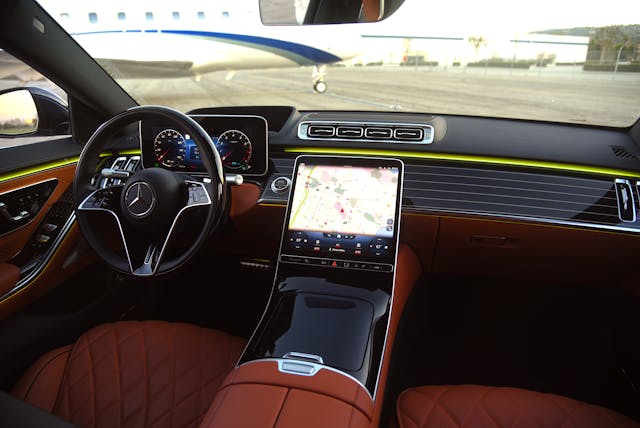
Which makes the S-Class just another example of a model changeover that is more about software and screens than it is about styling or powertrains. Not that there isn’t a story under the hood, for while the S500 badge used to only go on cars with V-8s, it now rides the rump of a car powered by Benz’s new 3.0-liter inline-six. Here in what is likely to be the final decade or two of internal-combustion passenger cars, Mercedes has returned to an all but extinct architecture with a compact and sublimely smooth mill that lines up its six pots in a row. The all-new M256 engine, which first arrived in the U.S. in 2019, features both a turbocharger and an electrically driven 70,000-rpm supercharger to take full advantage of its long stroke. It partners with a 48-volt flywheel starter/alternator/propulsion juiced by a 0.9-kW battery unit to softly whoosh out a table-top torque curve for moving the car’s 4800 pounds.
Marketplace
Buy and sell classics with confidence
The car’s rated 429 horsepower and 384 pound-feet of torque are healthy figures, but it’s the way the electric motor works with the engine to assist in acceleration and smooth over torque holes while the nine-speed automatic is shifting that are the system’s highlights. All of which are mostly transparent to the driver, who only feels a seamless shove in the shorts and hears a faint whirr from up front, even when asking for full acceleration. Not bad, considering there’s a thingy spinning at up to 70,000 rpm under the hood.
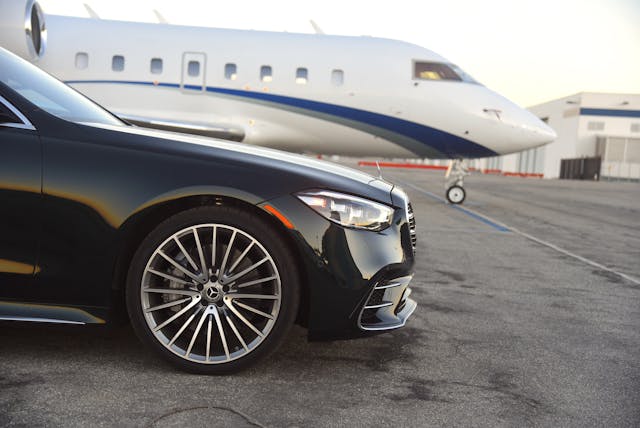
The car we drove had a handsome AMG tire/wheel pack ($1950) with Pirelli PZero PNCS tires, for Pirelli Noise Cancelling System. It’s one of several tire models the S-Class offers that has foam liners inside to quell tire noise. Further anti-noise efforts include strategic foam “hot dogs” placed in the body during assembly and baked to expansion during the paint process, and the widespread use of laminated acoustic glass. It all makes for a pretty hushed motoring experience.
We don’t have to ponder how much quieter and smoother the S-Class will be when it’s all-electric; the car is already here in the form of the 1000-pounds-heavier EQS we drove a few weeks before. The subsequent arrival of the S500 gave us more time with the same basic car, its four-wheel steering, and its MBUX operating system. Navigating the many submenus became easier with practice, and we even figured out how to change the interior ambient lighting color (you have a zillion options). The navigation screen is gigantic, and it can be echoed in the car’s cluster, where the driver can select from several gauge displays depending on how interested they are in the state of the car’s machinery.
However, persistent software bugs kept us from enjoying the full experience. The car almost never immediately recognized its own key fob, demanding the owner drop it in a designated fob spot—check the owner’s manual, it said—before it would start. It also periodically flashed messages about aligning the steering wheel with mystery dots somewhere in the three-dimensional digital instrument cluster, and it occasionally called out warnings in a female voice about approaching speed bumps when in fact it was just an imperfection in the freeway due to decayed infrastructure. Obviously, they don’t have decayed infrastructure in Germany.
Once it deigned to start, the S500 was otherwise a joy to pilot. It has moves, and it responds sharply to helm inputs, encouraging the driver to push hard in the left lane and seek holes to swoop around dawdlers. Unlike some cheaper pretenders, the S-Class’s body is as stiff as a hunk of tungsten, yet the constantly adapting air suspension sops up the road imperfections with astounding elasticity. Near the author’s house is a pronounced depression in the right lane of a busy roadway that abruptly yanks the asphalt out from under a car. Any speed over 20 mph causes most cars to hit their bump stops; the Benz barely noticed it. But throw it into a corner and it hunkers down with restrained roll and terrific grip. The S-Class is the ultimate argument against luxury SUVs, if you like to drive.
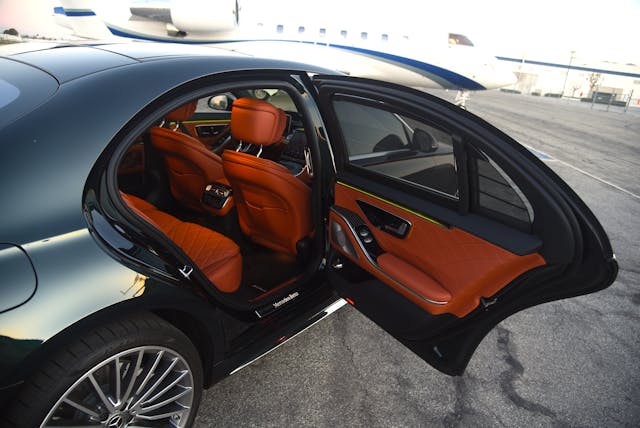
If you don’t, go ahead and plotz in the back of the S-Class and let someone else do it. The rear seats are lavishly dimensioned and welcoming—another departure from the EQS. The diamond-pleat stitching of the caramel-colored hides in our car is part of a $2290 leather package and well worth it. It’s opulent eye candy, as is the $1300 interior trim package that lays a band of black-lacquered panels around the cabin accented by silver pinstriping. Really, $3600 to make your Benz interior kick the butt of a Bentley’s is bargain shopping at its best, and it made our not-so-optioned EQS tester feel like a Plymouth inside. The S500 proves that Mercedes has still got it—when the buyer ticks the boxes.
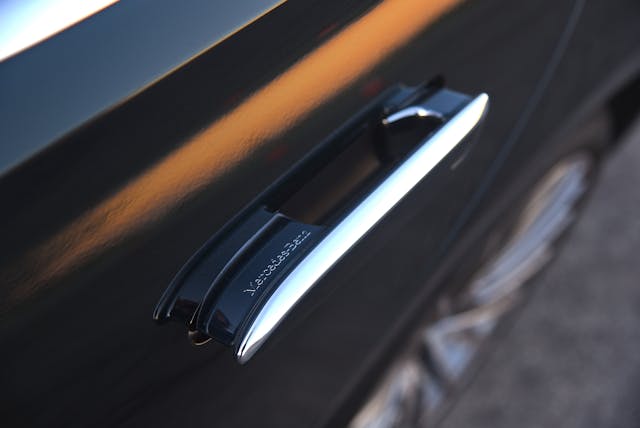
At least the S500 has the all-important self-sealing doors, unlike the EQS we drove. But just as in the EQS, the new slide-out door handles are mega annoying. Mercedes claims they are quieter at speed, but the motors that move them are louder than the car’s engine, and you can hear the handles “whump” back into place when you put the car in drive. Also, their operation is clunky. When you pull the door handle outward, it doesn’t send the signal to the electric solenoid to release the door until the handle is all the way out at its stop. Meaning, exactly when the door should be yielding to your hand, the solenoid is only just receiving the signal to move the machinery to release it. Thus, the door always feels slightly snagged, resisting you for half a heartbeat. Every time. If you buy a car like this, you want the doors to swing as if they are the daily lubricated gates to Valhalla. Ditch the whole thing, Mercedes, or redesign it so the solenoid gets its signal at the start of the pull, not the end.
Well, sniffs the Rolls owner, perhaps it’s true; you get what you pay for.
2022 Mercedes-Benz S500 4Matic
Price: $111,100/$127,330 (base/as-tested)
Highs: Wafts in quiet, plush comfort, well over 20 mpg achieved despite spirited driving, feels lighter and with a bigger engine than the spec sheet says.
Lows: Bugs in the software, doors that fight you.
Summary: You can spend more money on a luxury limo, but why?
